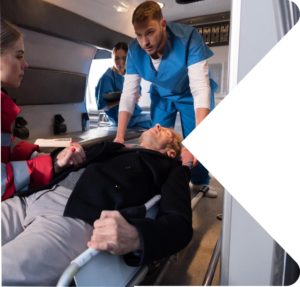Author: Dane Meuler, SVP Business Development at Kno2
Are you struck by the irony of printing or faxing the ePCR, after you have performed the laborious chore of entering copious amounts of data into your ePCR software? This reality is counter intuitive, which is frustrating. Then, after going through the effort to print or fax the ePCR, it gets lost before it makes it to the patient’s chart and someone has to resend it to the hospital. Or is the hospital logging into a variety of portals and systems and manually downloading the ePCR’s?

Thank you to the men and women of the Emergency Medical Services and transport organizations, and your families. You are on the front lines in strange and risky times. Kno2 is committed to improving the exchange of patient information with the hospitals to limit your risk of exposure.
To make matters worse, after receiving or downloading the ePCR, the hospital then manually uploads the ePCR into the patient’s chart, so it is finally available hours or days after the patient is admitted as an inpatient or discharged. You might as well send it to the hospitals via US Mail.
COVID has also highlighted the need to get medics out of the hospital ASAP, including risk of exposure to COVID and now the flu. At times, this is not easy because not only are the medics caring for patients, they are frequently solving information technology problems. The process of getting the ePCR to the hospital can be challenging and time consuming due to the moving parts; PC’s, tablets, printers and wi-fi networks at each different hospital. There are more productive and rewarding things medics should be doing besides wandering around the hospitals looking for a printer or trying to connect to wi-fi.
We all know there must be a “better way”, after all this is not the 1980’s! Unfortunately, budgets and priorities have all been impacted during the COVID crisis, which mean the “better way” of creating interoperability between EMS and the hospitals must be affordable and easy.
The old answers are not the answer to the new problems. In the past there have been two options for connecting EMS to the rest of healthcare.
- Paper/ Fax/ Portals – You know about this one
- HL7 interfaces – This term is less known in the EMS circles. There are a variety of products that fall into this category and they are promoted as an HIE or HDE for EMS connectivity to a single hospital or health system through an HL7 interface. It means someone has to buy yet another system.
HL7 interfaces are also known by two defining attributes; expensive and time-consuming. Technically an HL7 interface means you have to establish a connection to each hospital or health system individually, and your ePCR vendor will quote someone a very expensive price tag. Next will come a legal review, BAA and a lengthy project where the hospital exposes itself to further risk of hacking or ransomware by opening up a connection to their computer systems and EHR’s, like Epic and Cerner.
The ”better way” connects the EMS agencies to standards-based exchange methods over nationally trusted networks, like the Direct Standard™ and Direct secure messaging, which is an interoperability feature inherent in the hospital’s EHR. This reality is now reaching the light of obviousness and health systems are enthusiastic to remove the barriers to interoperability with EMS, eliminating expensive and time-consuming projects. For the hospital it is like flipping a light switch within their EHR.
The proof is in the data
After a brief project, Roanoke Fire & EMS and Carilion Clinic eliminated faxing, printing and the headaches and risks of the old approach. Submitting PCRs was a manual process. This arrangement presented a number of complications for Roanoke Fire & EMS, including:
- Time spent connecting to the printer
- Maintaining the printer and printing supplies
Tracking down and resubmitting reports that were lost in the process.
Roanoke Fire & EMS, like several other high-volume EMS agencies in the area, was already using ImageTrend Elite for ePCR creation. And Carilion had the ability to receive records into its Epic system via Direct secure messaging into Care Everywhere, the interoperability platform in Epic.
It took less than one month to complete the connection, with no HL7 interface or VPN because the technology was already in place and working within Carilion’s Epic EHR. There were minimal changes needed to Elite system owned by Roanoke Fire & EMS. ImageTrend simply added the additional export connection through Kno2 and then worked with Carilion and Roanoke to verify both the transmission and receipt of data.
One of the most immediate results that surfaced from the project was improved EMS crew efficiency. Immediate reporting with automating the ePCR workflow, which in turn, eliminated the phone calls back and forth between the agency and the hospital regarding lost reports.
“It was truly seamless to our providers in the field, and we have not had to give it a second thought since.”
Tiffany Moran, Roanoke Fire & EMS Automation Coordinator
Kno2 is integrated to ePCR systems like ImageTrend Elite so the transfer of the ePCR happens invisibly and instantaneously into the hospital’s EHR, as a cloud-based transaction, whether you are using a PC or a tablet.
The “better way” uses Kno2 to instantly connect the EMS Agencies to the Hospitals, for a very low cost. The hospital staff, EMS and transport agencies save a tremendous amount of time and are no longer chasing down lost reports. The records get into the patient’s chart instantaneously and medics get out of the hospital faster since they are interoperable with the Hospital and are no longer providing IT support.
Learn more here, or send me a quick email at dmeuler@kno2.com .





